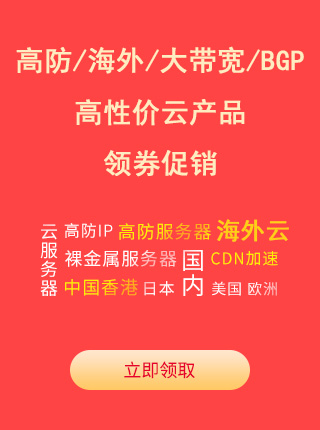PHP LRU算法的基本原理是什么,处理流程是怎样的
Admin 2022-08-02 群英技术资讯 828 次浏览
 这篇文章给大家分享的是“PHP LRU算法的基本原理是什么,处理流程是怎样的”,对大家学习和理解有一定的参考价值和帮助,有这方面学习需要的朋友,接下来就跟随小编一起学习一下吧。
这篇文章给大家分享的是“PHP LRU算法的基本原理是什么,处理流程是怎样的”,对大家学习和理解有一定的参考价值和帮助,有这方面学习需要的朋友,接下来就跟随小编一起学习一下吧。原理
LRU是Least Recently Used 近期最少使用算法。 内存管理的一种页面置换算法,对于在内存中但又不用的数据块(内存块)叫做LRU,操作系统会根据哪些数据属于LRU而将其移出内存而腾出空间来加载另外的数据。
什么是LRU算法?LRU是Least Recently Used的缩写,即最近最久未使用,常用于页面置换算法,是为虚拟页式存储管理服务的。
关于操作系统的内存管理,如何节省利用容量不大的内存为最多的进程提供资源,一直是研究的重要方向。而内存的虚拟存储管理,是现在最通用,最成功的方式—— 在内存有限的情况下,扩展一部分外存作为虚拟内存,真正的内存只存储当前运行时所用得到信息。这无疑极大地扩充了内存的功能,极大地提高了计算机的并发度。
虚拟页式存储管理,则是将进程所需空间划分为多个页面,内存中只存放当前所需页面,其余页面放入外存的管理方式。
然而,有利就有弊,虚拟页式存储管理减少了进程所需的内存空间,却也带来了运行时间变长这一缺点:进程运行过程中,不可避免地要把在外存中存放的一些信息和内存中已有的进行交换,由于外存的低速,这一步骤所花费的时间不可忽略。
因而,采取尽量好的算法以减少读取外存的次数,也是相当有意义的事情。
基本原理
假设 序列为 4 3 4 2 3 1 4 2物理块有3个 则首轮 4调入内存 4次轮 3调入内存 3 4之后 4调入内存 4 3之后 2调入内存 2 4 3之后 3调入内存 3 2 4之后 1调入内存 1 3 2(因为最少使用的是4,所以丢弃4)之后 4调入内存 4 1 3(原理同上)最后 2调入内存 2 4 1
规律就是,如果新存入或者访问一个值,则将这个值放在队列开头。如果存储容量超过上限cap,那么删除队尾元素,再存入新的值。
整体设计
用数组保存缓存对象(Node);
缓存对象(Node)之间通过nextKey,preKey组成一个双向链表;
保存链表头 跟尾;
处理流程

主要代码
Node 节点类
/**
* 缓存值保存类,
* Class Node
* @package app\common\model
*/
class Node{
private $preKey=null;//链表前一个节点
private $nextKey=null;//链表后一个节点
private $value=null;//当前的值
private $key=null;//当前key
public function __construct(string $key,$value)
{
$this->value=$value;
$this->key=$key;
}
public function setPreKey($preValue){
$this->preKey=$preValue;
}
public function setNextKey($nextValue){
$this->nextKey=$nextValue;
}
public function getPreKey(){
return $this->preKey;
}
public function getNextKey(){
return $this->nextKey;
}
public function getValue(){
return $this->value;
}
public function setValue($value){
$this->value=$value;
}
public function setKey(string $key){
$this->key=$key;
}
public function getKey(){
return $this->key;
}
}
缓存类
/**
* 实现lru缓存
* Class LruCache
* @package app\common\model
*/
class LruCache
{
public $cacheTable =[];
private $headNode=null;
private $lastNode=null;
private $cacheCount=0;
private $cacheMax=100;
/**
* 测试输出使用
*/
public function dumpAllData(){
if (!empty($this->headNode)){
$node=$this->headNode;
while (!empty($node)){
echo 'key='.$node->getKey().' nextKey='.(empty($node->getNextKey())?'null':$node->getNextKey()->getKey()).' preKey='.(empty($node->getPreKey())?'null':$node->getPreKey()->getKey()).' value='.$node->getValue()."</br>";
$node=$node->getNextKey();
}
}
}
/**
* @param int $count
*/
public function setCacheMax(int $count){
$this->cacheMax=$count;
}
/**
* @param string $key
* @param $value
* @return bool
*/
public function set(string $key,$value){
//设置值为null,则认为删除缓存节点
if ($value===null){
$this->del($key);
return true;
}
//判断是否存在表中,存在则更新连表
if (!empty($this->cacheTable[$key])){
$this->updateList($key);
return true;
}
//先判断是否要删除
$this->shiftNode();
$this->addNode($key,$value);
return true;
}
/**
* @param string $key
* @return bool
*/
public function del(string $key){
if (!empty($this->cacheTable[$key])){
$node=&$this->cacheTable[$key];
//摘出节点
$this->jumpNode($node);
//置空删除
$node->setPreKey(null);
$node->setNextKey(null);
unset($this->cacheTable[$key]);
return true;
}
return false;
}
/**
* @param string $key
* @return null
*/
public function get(string $key){
if (!empty($this->cacheTable[$key])){
$this->updateList($key);
return $this->cacheTable[$key]->getValue();
}
return null;
}
//直接添加节点
private function addNode($key,$value){
$addNode=new Node($key,$value);
if (!empty($this->headNode)){
$this->headNode->setPreKey($addNode);
}
$addNode->setNextKey($this->headNode);
//第一次保存最后一个节点为头节点
if ($this->lastNode==null){
$this->lastNode=$addNode;
}
$this->headNode=$addNode;
$this->cacheTable[$key]=$addNode;
$this->cacheCount++;
}
//主动删超出的缓存
private function shiftNode(){
while ($this->cacheCount>=$this->cacheMax){
if (!empty($this->lastNode)){
if (!empty($this->lastNode->getPreKey())){
$this->lastNode->getPreKey()->setNextKey(null);
}
$lastKey=$this->lastNode->getKey();
unset($this->cacheTable[$lastKey]);
}
$this->cacheCount--;
}
}
//更新节点链表
private function updateList($key){
//这里需要使用引用传值
$node=&$this->cacheTable[$key];
//当前结点为头结点 直接不用处理
if ($this->headNode===$node){
return true;
}
//摘出结点
$this->jumpNode($node);
//跟头结点交换
$node->setNextKey($this->headNode);
$this->headNode->setPreKey($node);
$node->setPreKey(null);
$this->headNode=$node;
return true;
}
//将某个节点摘出来
private function jumpNode(Node &$node){
if (!empty($node->getPreKey())){
$node->getPreKey()->setNextKey($node->getNextKey());
}
if (!empty($node->getNextKey())){
$node->getNextKey()->setPreKey($node->getPreKey());
}
//如果是最后一个节点,则更新最后节点为它的前节点
if ($node->getNextKey()==null){
$this->lastNode=$node->getPreKey();
}
//如果是头结点
if ($node->getPreKey()==null){
$this->headNode=$node->getNextKey();
}
}
}
测试代码
public function tt(){
$cath=model("LruCache");
$cath->setCacheMax(3);
$cath->set("aa","aaaaaaaaaaa");
$cath->set("bb","bbbbbbbbbbbb");
$cath->set("cc","ccccccccccccc");
$cath->get("aa");
// $cath->dumpAllData();
$cath->set("dd","ddddddddddddd");
// $cath->del("cc");
// var_dump($cath->cacheTable);
$cath->dumpAllData();
exit();
}
其实php的数组就是有序的,也可以直接用php数组实现,这里只是提供一个实现的思路,仅供参考哈!
以上就是关于“PHP LRU算法的基本原理是什么,处理流程是怎样的”的介绍了,感谢各位的阅读,如果大家想要了解更多相关的内容,欢迎关注群英网络,小编每天都会为大家更新不同的知识。

免责声明:本站发布的内容(图片、视频和文字)以原创、转载和分享为主,文章观点不代表本网站立场,如果涉及侵权请联系站长邮箱:mmqy2019@163.com进行举报,并提供相关证据,查实之后,将立刻删除涉嫌侵权内容。
猜你喜欢
-
Laravel中容器、控制反转以及依赖注入是什么意思
本篇文章给大家带来了关于Laravel的相关知识,其中主要介绍了关于容器、控制反转以及依赖注入的相关问题,下面就一起来看一下什么相关的内容,希望对大家有帮助。
-
PHP5和7实现获取函数差别在哪
在 PHP5 和 PHP7 中通过变量获取函数/方法名执行函数/方法时,可能会由于版本之间不通的解释策略导致相同的代码无法运行。
-
Yii2框架下运行代码内存泄漏的情况怎么办
这篇文章主要给大家介绍了关于Yii2框架跑脚本时内存泄漏问题的分析与解决方法,文中通过示例代码介绍的非常详细,对大家学习或者使用Yii2具有一定的参考学习价值,需要的朋友们下面来一起学习学习吧
-
ci框架分页类怎样用?一文带你搞懂ci分页
我们做网页的时候,常常会需要使用到分页,这篇文章主要给大家分享CI框架分页类的用法,下文代码具有一定的借鉴价值,感兴趣的朋友可以参考一下,下面我们就一起来看看吧。
-
如何理解sql盲注原理是什么?
本篇文章给大家带来了关于laravel的相关知识,其中主要介绍了怎样通过造一个laravel漏洞来讲解sql盲注原理,所谓的盲注就是在服务器没有错误回显的时候完成的注入攻击,下面一起来看一下,希望对大家有帮助。
成为群英会员,开启智能安全云计算之旅
立即注册关注或联系群英网络
7x24小时售前:400-678-4567
7x24小时售后:0668-2555666

24小时QQ客服

群英微信公众号
CNNIC域名投诉举报处理平台
服务电话:010-58813000
服务邮箱:service@cnnic.cn
投诉与建议:0668-2555555
Copyright © QY Network Company Ltd. All Rights Reserved. 2003-2020 群英 版权所有
增值电信经营许可证 : B1.B2-20140078 粤ICP备09006778号 域名注册商资质 粤 D3.1-20240008



